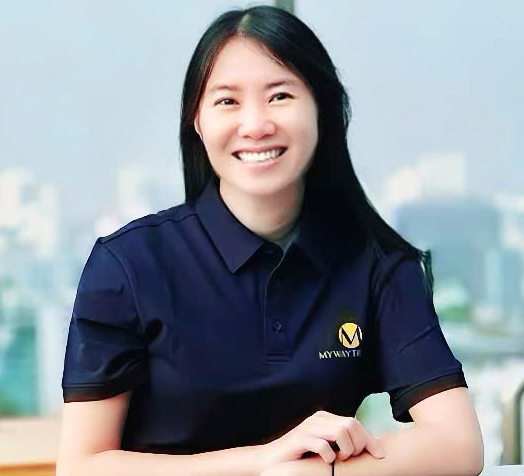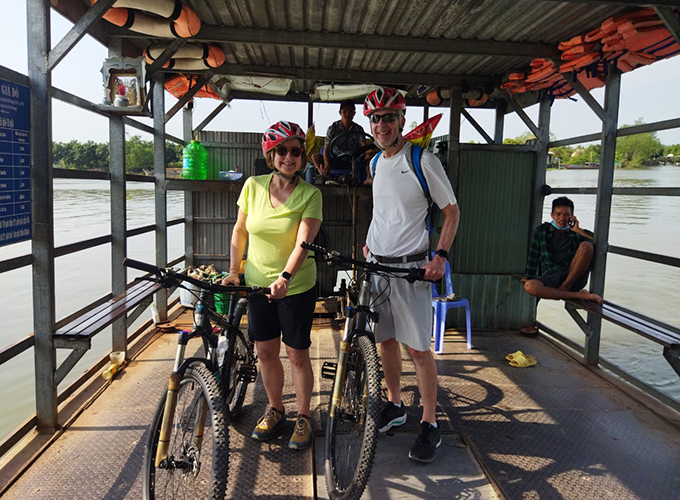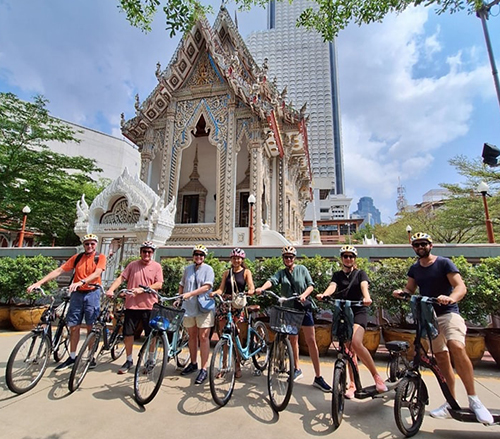Places to visit in Hanoi
- Introduction to Hanoi
Being world-famous with vestiges of a 1000-year-old past, Vietnam’s capital is deemed a must-come destination in Asia owing to the marriage of its tradition and modernity. Places to visit in Hanoi have offered a variety of experiences such as discovering attractions, exploring culture, and savoring specialties in a convivial atmosphere.
- Best time to visit in Hanoi
Suited in the tropical monsoon zone, Hanoi’s weather has four distinct seasons:
- Spring (February to April) is known for moderate temperatures, which generally vary from 15℃ to 22℃. Occasional drizzles nourish the landscape and colorful flower blooms adorn the capital.
- Summer (May to July) is characterized by warmth with average highs of 27℃ and occasionally reaching 35℃. Frequent downpours may bring refreshment to the dense vegetation growth.
- Autumn (August to October) shows pleasant and mild weather, which makes a colorful and poetic city. Therefore, Hanoi’s Autumn is regarded as an inspiration in many poems, songs, and films.
- Winter (November to January) offers a cold and dry atmosphere with occasional drizzles and fog.
It is a dilemma about the best time in Hanoi, the city welcomes tourists all year round with a unique appearance and you should check the weather forecast in advance to avoid rainy or hot periods while exploring “Places to visit in Hanoi”.
- Things to do in Hanoi
Ho Chi Minh Mausoleum: 20th-century Vietnamese leader Ho Chi Minh, called Uncle Ho by the locals, is one of the heroes contributing to victory over the occupation of France and America. His embalmed body lies in a monumental marble mausoleum guarded by soldiers 24/7. His life story may intrigue many visitors so don’t forget to employ a guide and go early to avoid queuing in Hanoi Tour Packages.
Hoa Lo Prison: Finished in 1901 by the French, it was used to lock up political prisoners with walls of 4-meter high, powered wires, and watch towers. In addition, the prison was also equipped with guillotine, shackles, leg chains, and torture instruments. The trip can enhance your view, comprehension, and appreciation of the Vietnamese patriots.
Temple of Literature: Located in the center of Hanoi since the 11th century, the Temple of Literature is the first University in Vietnam so students often flock here before examinations to wish them luck. The area is home to the central pagoda, lake, and greenery garden. Therefore, it can be a must-visit destination for Vietnam Historical Tours.
Tran Quoc Pagoda: In the Tran dynasty, Tran Quoc Pagoda is considered the center of Buddhism. Over a thousand years passed, it still retains a symbol of the capital with its story and architectural characteristics despite urbanization. Going along the gate, three sites, including the Front House (Tien Duong), the Ancestor House (Nha To), and the Stele House (Nha Bia) are worth exploring.
Hanoi Opera House: The spectacular structure, which rose to prominence as one of Hanoi’s most famous landmarks, is the venue for symphonic concerts, bamboo cirque, and other exciting cultural events. Tourists who entertain performances are not only immersed in Vietnamese arts but also adore French architecture of stage, color harmony, and decoration.
Hoan Kiem Lake: Among places to visit in Hanoi, hidden in the heart of the capital, Hoan Kiem Lake offers an open area with walking paths around, where exercise-oriented persons flock at the weekend. While you are strolling, employ a tour guide to explore the Vietnamese legend related to this lake. Then you may find out it has multiple names with specific meanings.
One Pillar Pagoda is regarded as a combination of religion and architecture as it was built to express appreciation for Quan Am Bo Tat (female Buddhist goddess) who invited the Emperor to sit on the lotus in his dream. Therefore, its primary structure is eight wooden beams that represent lotus petals, combining four curved corners of the roof, emphasizing the harmony of the universe. Don’t miss a good chance while taking Vietnam Cultural Tours!
Train Street: Passing through residential areas, train rail has become an appealing attraction for those who enjoy sipping a drink with potential danger when a hulking locomotive is some centimeter away from you. Check the schedule in advance for Hanoi Tour Packages:
Mon – Friday: 7 pm; 7.45 pm; 8.30 pm; 10 pm
Weekend: 6 am; 9 am ; 11.20 am; 3.20 pm; 5.30 pm; 6 pm; 7 pm; 7.45 pm; 8.30 pm; 9 pm; 11 pm
Hanoi Old Quarter: For more than a thousand years, the Old Quarter retains both the traditional beauty of ancient houses, temples, and craft stalls and modern features emphasized by bars or mouth-watering food. Additionally, Hanoi Old Quarter offers visitors nightlife activities so tourists can experience as much as they can.
Vietnamese Women’s Museum: Expressed appreciation for Vietnamese women in history and culture, the site features their importance in the war and economy, highlighting figures of Vietnamese Heroic Mothers, female street vendors, and women’s household responsibilities.
The Water Puppet Theater: Villages in northern Vietnam have put on unique performances for more than 1000 years. In a theater, puppet masters narrate stories using lacquered wooden dolls that are partially immersed in water. With live music, the performances frequently feature periods from Vietnamese history, culture, and daily life, imparting educational messages and adding entertaining details.
Ngoc Son Temple: While tourists are strolling around Hoan Kiem Lake, they may notice a sacred temple on a small island rising on water. The temple named Ngoc Son was built in the 19th century to commemorate Tran Hung Dao, the most outstanding military leader of the Tran Dynasty. In addition, the temple honors Van Xuong De Quan, the Taoist deity of prosperity in traditional Chinese culture.
The Museum of Ethnology is a public museum featuring exhibits from Vietnam’s ethnic groups as well as a research center. Scientific research, collecting, documenting, conservation, presentation, and preservation of the various ethnic groups in the country’s cultural and historic inheritance are the goals of the Museum. Therefore, a trip to the Museum of Ethnology may illuminate your understanding of Vietnamese ethnic groups expressed in artifacts during Vietnam Cultural Tours.
Saint Joseph’s Cathedral: Called Big Church by the locals, has been preserved in good conditions after fierce wars. The church was stated to have some characteristics typical of Gothic Revival architecture, giving it the appearance of the Notre Dame de Paris. It has evolved into a historical landmark in Hanoi that captures the essence of the city’s past beauty and leaves a lasting effect on visitors despite being located in a busy metropolis.
- Hanoi Food and Drink
As a culinary hub of Vietnam for your “places to visit in Hanoi tour”, the capital has never failed to impress visitors with the different flavors of the cuisine at either fine dining establishments or street food sellers. Its cuisine is typically served with flavorful broth, traditional dipping sauce, and fresh herbs. Hanoi’s delectable dishes include:
- Bun Cha (Kebab Rice Noodles)
- Pho (Vietnamese Traditional Noodles)
- Banh Mi
- Cha ca La Vong (La Vong Grilled Fish)
- Banh Tom Ho Tay (West Lake Fried Shrimp Cake)
- Pho Cuon (Pho rolls)
- Cha Ruoi Ha Noi (Hanoi’s sandworm omelet)
Furthermore, Hanoi drink is highly renowned for a wide range of regional specialties to quench your thirst from visually appealing mixed drinks to normal Tra Sen (Lotus Tea), Nuoc Sau (Indochina Dragon Plum Juice), or locally made beer on the street, to traditional beverages in a hidden establishment during Hanoi tours. One of the must-try drinks is Egg Coffee made of egg yolk, Vietnamese coffee powder, and condensed milk. If you want to try it, Cafe Giang at 39 Nguyen Huu Huan Street, in the Old Quarter is recommended.
- Moving around Hanoi
As lots of attractions, stalls, and hotels are suited closely to each other, walking around Hanoi is preferred to immerse in atmospheric streets and quarters while exploring local lifestyles, as suggested by Vietnam Private Tours. Other options can be scooters, buses, taxis, or bicycles, which depends on your orientation.
- Dos and Don’ts
While walking around some places to visit in Hanoi, Vietnam Private Tours suggests tourists to read carefully these instructions:
Dos
- Keep your tickets, cash, credit cards, and other valuables in a secure place. Ask the receptionists of the lodging in advance to store them.
- Wear suitable clothing because you may visit some sacred locations such as the Ho Chi Minh Mausoleum, temples, or pagodas. Revealing clothing may not be allowed to come in.
- Be wary of pickpockets in crowded areas.
- Bargain with the sellers for better prices.
- Be alert and patient when you cross the stress.
Don’ts
- Bring a lot of cash while strolling around.
- Wear a lot of jewelry because you may become a target of pickpockets.
- Attempt to take pictures of military facilities or anything related to the armed forces. You need to ask for permission in advance.
- Choose an accommodation too far from the center while booking Hanoi tours.
Along with world-famous destinations, Vietnamese people are welcome and friendly so tourists can feel like stay at home. Don’t hesitate to explore Hanoi Vietnam with Vietnam Private Tours.
Speak to one of our local experts







